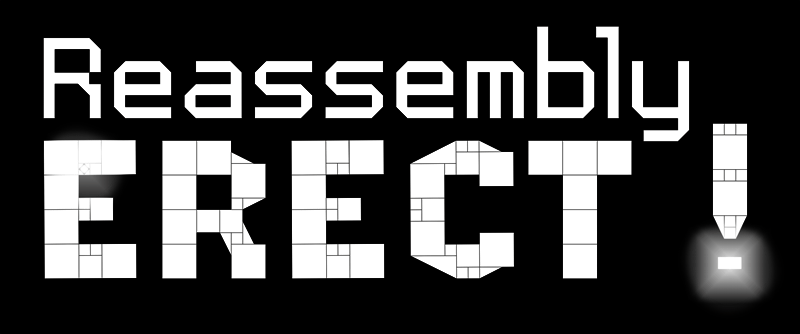Forging the One.
The tournament fleet competitions are new, but in testing creating, and trying to figure-out what works, I have some thoughts and observations to share. Essential concepts that I believe will play-out in the future.
When you start designing, you’ll probably find that results will be quite random or inconsistent. Some fleets may dominate some designs, while falling-prey to others. You can experiment many different ways, but coming up with a consistent winner is a bit of a challenge. You may have many different designs, each one trumping another, but none rising above all others. How do you make the one fleet that will win in all situations?
Armies; Not Bosses.
The first time you try a competitive fleet, your probably take your best 8000P ship and copy it a few times to make your fleet. However, you’ll probably find that this does not win and is inconsistent.
1. A handful of ships can only target a few enemies. Many ships can focus their fire on a few enemies. Therefore, a small fleet of large ships can actually get bullied by a large fleet of small ships.
2. Large ships are inefficient. They need more thrusters to move larger mass. They rely on shields for defense. They may have many weapons, but they also need generators for those weapons. …. These things cost P that could be all used for firepower.
Does That Mean Smaller is Better?
In someways, yes. If your target is a fleet of 35,000P, you could only have four full 8000P ships, and one smaller one. Or, you could have seventy 500P ships! Seventy verse five – numbers can out-weigh brute-strength.
However, if we are just talking about tiny ships trying to take out large ships, this might not work. If the ships are too small, they won’t be able to do significant damage to the large ships. Small ships need firepower to make this work. They also need to be quick enough to not get slaughtered.
Effectiveness Per Ship
Where do we find the correct balance of per-ship damage and maximum use of P? I’m going to call this Effectiveness Per Ship. You want to maximize damage and survivability across your fleet for the lowest-possible P cost. You want as many ships as possible, allowing you to hit either as many targets as you can, or focusing your firepower on a single target. (I’m leaving-out the thought of spinners since they are generally not allowed.)
Think fluidity.
As Bruce Lee said, “be formless. Shapeless – like water. … Now water can flow, or it can crash. Be water my friend.”
How does this apply? Many small ships can be hard to hit. They flow around an enemy. An enemy can only focus on one ship. While that ship is dodging the enemy, his allies are hitting the pursuer from other angles. Even if the pursuer himself is fast and maneuverable, he will succumb to cross-fires. A deadly swarm can apply damage efficiently and fluidly.
- We need efficiency per P cost so we can have as many allies as possible.
- We need maximum effective damage per ship. Explosion and Splash damage are prime candidates. The area-of-effect weapons generally give a solid punch for the P.
- We need survivability without having to buy generators or shields. This means dodging. – You might think armor would be good, but armor slows-up your ships and allows the enemy fleet to score points while they hammer on your armor. Dodging is better.
With these things in mind, lets use an example:
I’m going to use the starting faction, mainly because they have many weapons, good armor, good thrusters, AND the Command Module also acts as a thruster by itself, so that’s one less thruster to buy.
A Command Module can produce 300 energy-per-second. Our weapon load-out will need to fit into that range so we don’t need any generators. I’m not going to use shields. I’m looking for maximum firepower.
My weapon of choice will be missiles. They are long-range and guided. They are also cheap energy-wise. I can fit 21 missile launchers on a ship before I need to think about adding a generator.
Thrusters are needed to make the ship dodgy. I’m going to spend 80P on thrusters. I also don’t want the ships to be too large and sluggish, so I’m only going to use 12 missile launchers per ship. That way it’ll be light and agile. Total cost is 464P.
So for 464P, I can fit 75 ships into a 35,000P tournament fleet, giving me 900 missile launchers – long-ranged weapons that will chase my enemies around in a devastating mass of guided explosion damage.
Refining Your Fleet.
With our basic concept in mind, now it’s time to design and test. Make it dodgy. Make it fast. Test different variations against each-other and seek improvements. Test verse other fleet designs to make sure it doesn’t have obvious flaws when fighting other types of opponents.
Consider tweaking your P cost. – Is a 75 ship fleet the best you can do, or will 125 ships be more effective? More allies mean more cross-fire situations, so cheaper ships may be more effective.
Do we need point-defense? – Missiles may not be enough. Maybe remove some and add-in burst lasers or flak cannons.
Are more thrusters needed? – Many battles will be decided by points. It’s actually pretty rare for a fleet to be completely destroyed before the time is up unless they are totally miss-matched. Not getting hit should be a specific goal to improve your scores.
Should we add in another design to offset a weakness? – If the fleet is not effective enough verse a certain opponent, perhaps adding-in another design will help cover the weakness in the current design.
Test and tweak your fleet designs until you find the one fleet that wins against all others.
One Ship to Rule Them All?
Is it possible that there exists one ship design that maximizes a fleet’s efficiency once it has been multiplied? Is there a magical convergence of P cost, weapon capacity, and dodging ability so efficient as to be unbeatable against all others? Is there an ultimate, uber fleet-ship?
In single ship tournaments, this is not possible. One ship can not win verse all opponents. Ships each win in different formats, sometimes based on luck of opponents in a bracket, or the stupidity of the AI. However, fleet tournament matches take on a different cast.
One could apply mathematics to calculate the ultimate small ship design. Smaller ships make excellent fleets, and there are less block combinations to make a small ship with. Damage-per-P, good range, quick maneuverability – an excellent 2000P fleet would only get better and more consistent once multiplied to a 15,000P or 35,000P fleet. Ten ships, or one hundred; how would you beat the best small design? A collection of small parts to be crowned champion. There would be only one, or small variations of that one.
I fear there may a point of maximum efficiency.
One ship to rule them all, and in the darkness bind them.

